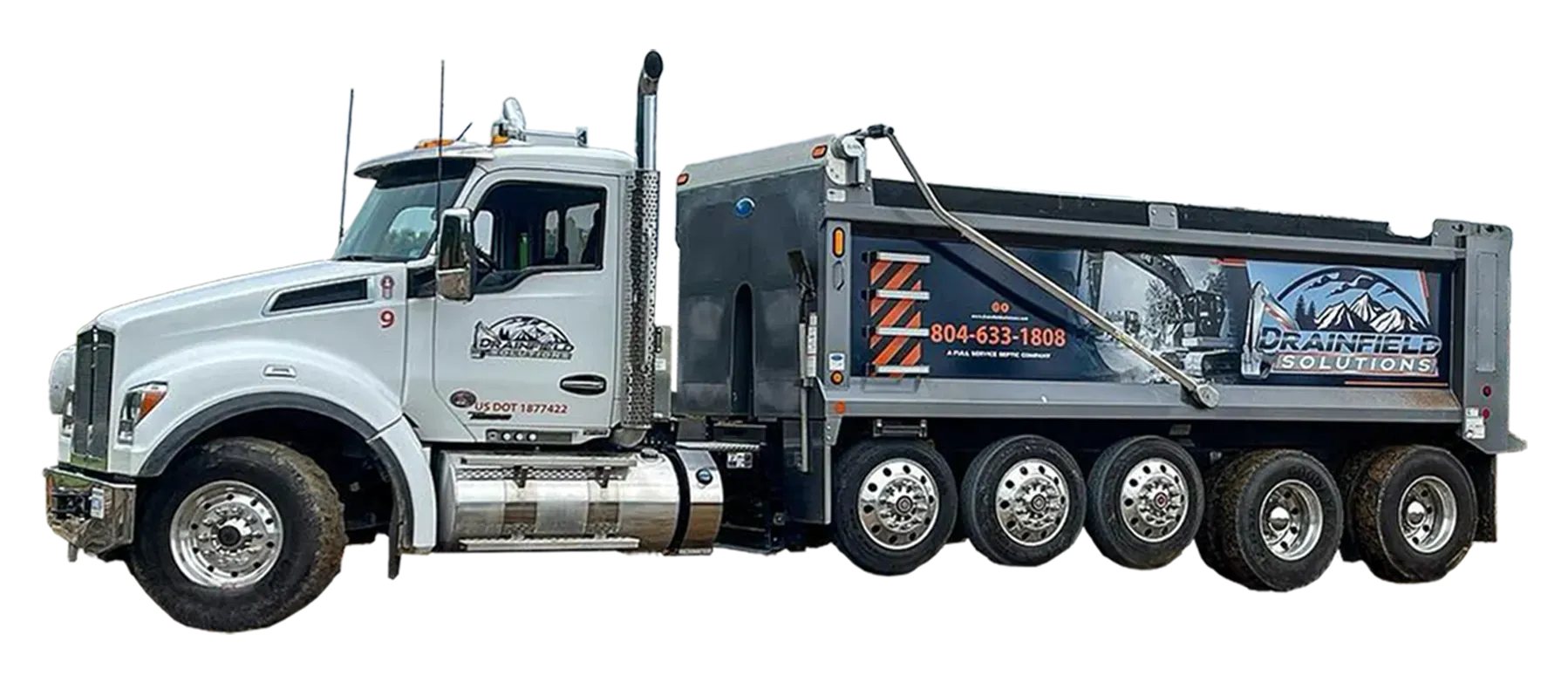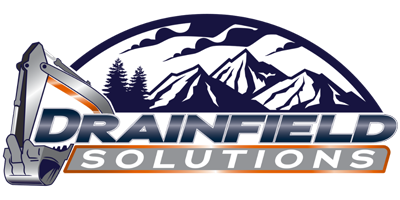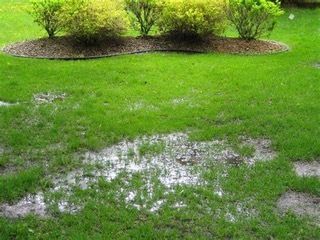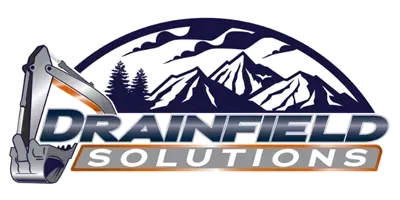
How to Diagnose Drainfield Problems: A Step-by-Step Guide
January 11, 2025
Your drainfield might not be the most exciting part of your property, but it plays a crucial role in your septic system. When it’s working well, you don’t think about it. But when something goes wrong, the signs are often impossible to ignore. From soggy patches in your yard to slow drains in your home, drainfield problems can quickly disrupt your daily routine.
At Drainfield Solutions, we know how frustrating these issues can be. That’s why we’ve put together this guide to help you diagnose common drainfield problems and understand what steps to take. Let’s dive in!
Step 1: Recognize the Signs of a Problem
Drainfield issues often start subtly, but they can escalate quickly if ignored. Keep an eye out for these common warning signs:
- Slow Drains: If multiple drains in your home are emptying slowly, it’s a sign that your septic system might be struggling to keep up.
- Sewage Odors: Foul smells around your yard or near your drainfield can indicate that wastewater isn’t being properly filtered.
- Standing Water: Puddles or soggy patches near your drainfield suggest that the soil is oversaturated and unable to absorb wastewater.
- Lush Vegetation: While a green lawn is great, unusually lush or fast-growing plants over your drainfield can signal excessive nutrients leaking from the system.
- Backups: Sewage backing up into sinks, toilets, or tubs is a sure sign of a serious problem that needs immediate attention.
- Gurgling Noises: Strange sounds coming from your drains or fixtures often point to blockages or air trapped in the system.
If you notice any of these symptoms, don’t wait. Addressing issues early can prevent more significant (and expensive) problems down the line.
Step 2: Determine the Likely Cause
Once you’ve identified the symptoms, the next step is to figure out what might be causing the problem. Here are some common culprits:
- Clogs in the System: Flushing non-biodegradable items like wipes, paper towels, or grease can lead to blockages that affect the drainfield.
- Excessive Water Use: Overloading the system with too much water can saturate the drainfield, preventing it from properly filtering wastewater.
- Biomat Buildup: Over time, a slimy layer of organic material (biomat) can form around drainfield pipes, reducing their efficiency.
- Soil Compaction: Heavy traffic, construction, or landscaping can compact the soil above the drainfield, hindering water absorption.
- Root Intrusions: Tree and shrub roots can infiltrate drainfield pipes, causing blockages and damage.
- Aging System: If your drainfield is 20–30 years old, it may simply be reaching the end of its lifespan.
Understanding the cause of the problem is essential for choosing the right solution.
Step 3: Inspect the Drainfield
A visual inspection of your drainfield can provide valuable clues about what’s going on. Here’s what to look for:
- Water Pooling: Check for areas where water seems to be collecting or pooling on the surface.
- Soft Spots: Walk around the drainfield and feel for mushy or wet patches in the ground.
- Vegetation Growth: Note any areas where grass or plants seem unusually green or thriving compared to the rest of the yard.
While you can perform a basic inspection yourself, it’s always a good idea to call in a professional for a more thorough evaluation.
Step 4: Check Inside the Home
Your home’s plumbing can also provide important clues about drainfield problems.
- Monitor Drains and Toilets: Are they draining slowly? Do you hear gurgling sounds when water flows?
- Look for Backups: If wastewater is backing up into sinks, tubs, or toilets, it’s a sign that the problem is affecting the entire system.
These symptoms often point to blockages or an overloaded system, both of which can impact the drainfield.
Step 5: Address the Problem
Once you’ve identified the likely cause, it’s time to take action. Here are some common solutions based on specific issues:
1. Clogs in the System
- Solution: Have your septic tank pumped to remove accumulated solids and scum. Avoid flushing anything that isn’t septic-safe.
2. Excessive Water Use
- Solution: Conserve water by spreading out laundry loads, fixing leaks, and using water-efficient fixtures.
3. Biomat Buildup
- Solution: Routine pumping and aerating the drainfield can help manage biomat growth.
4. Soil Compaction
- Solution: Avoid driving or parking on the drainfield. Aerate compacted soil to improve drainage.
5. Root Intrusions
- Solution: Remove invasive roots and consider installing root barriers to prevent further damage.
6. Aging System
- Solution: If your drainfield is at the end of its lifespan, it may be time for a replacement. Work with a professional like Drainfield Solutions to design a new system tailored to your needs.
Step 6: Prevent Future Problems
The best way to deal with drainfield issues is to prevent them from happening in the first place. Here are some proactive tips to keep your system healthy:
- Regular Maintenance: Schedule septic tank pumping every 3–5 years and have your system inspected annually.
- Watch What You Flush: Only flush toilet paper and human waste. Avoid chemicals, grease, and non-biodegradable items.
- Conserve Water: Spread out water-intensive activities and fix leaks promptly.
- Protect the Drainfield: Keep vehicles, heavy equipment, and large structures away from the drainfield.
- Choose Landscaping Wisely: Plant shallow-rooted grass or ground covers over the drainfield and avoid deep-rooted trees or shrubs nearby.
A little care and attention can go a long way in extending the life of your drainfield.
Why Choose Drainfield Solutions?
At Drainfield Solutions, we’ve been helping homeowners diagnose and fix drainfield problems since 2005. As a family-owned and operated business, we take pride in delivering reliable, eco-friendly septic system solutions.
- Comprehensive Inspections: Our technicians are trained to identify issues and recommend the best course of action.
- Expert Repairs: Whether it’s clearing clogs, repairing pipes, or replacing an aging system, we’ve got you covered.
- Preventive Maintenance: We help you stay ahead of problems with routine pumping and inspections.
- Tailored Solutions: Every property is unique, and we customize our services to meet your specific needs.
With nearly two decades of experience, we’re committed to keeping your septic system running smoothly and protecting your property for years to come.
Contact us today at 804-633-1808 or visit our contact page to schedule an inspection or learn more about our services. Your drainfield deserves the best care, and with Drainfield Solutions, that’s exactly what it’ll get!
Share Post
Latest Posts
Ready to Take the Next Step?
Whether you're in need of a system inspection or regular maintenance, Drainfield Solutions is here to help. Get in touch today for reliable service you can trust.






